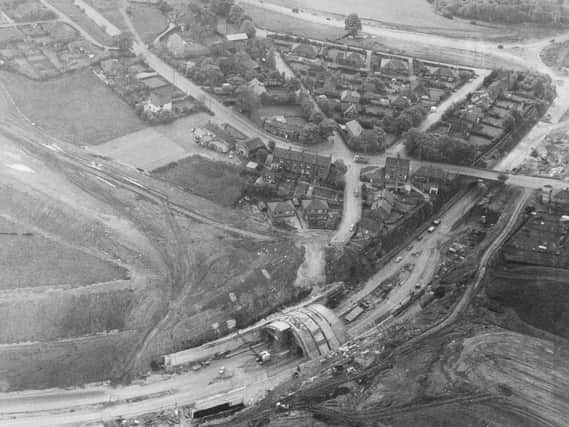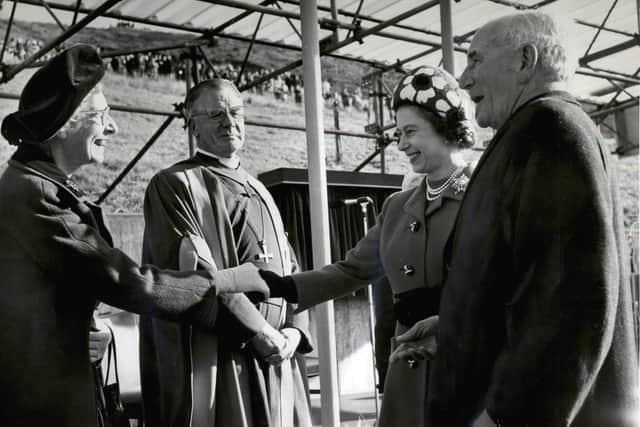M62 memories on 50th anniversary - a story of sheep, snow and a Playboy photoshoot


But in the 1960s civil servants in London poured over a map of the north and decided it was the only possible route for what they called a “super-highway” between Hull and Liverpool.
Described by doubters as “the road to ruin”, it almost defeated them. In winter there was prolonged ice and snow. Low cloud frequently reduced visibility to nil and torrential rain turned the construction site into soup. It took seven years to build that one six-mile stretch of motorway.
Advertisement
Hide AdAdvertisement
Hide AdThe late Geoffrey Hunter, who managed the project for the West Riding Council, once said in despair: “It’s not possible to build a motorway over a bog because it won’t support anything. It’s better to go through it in a boat. And that moor is the only place in the world where it can actually rain up your trouser leg.”


Despite assembling the biggest fleet of earth-moving vehicles ever seen in Britain, embarrassingly the contractors couldn’t even get onto the moor at first, and when finally they managed it several machines were lost in the peat.
In desperation, Hunter turned to farmer Joe Jagger at nearby Ripponden, who used his 12-year-old son’s pony, Peggy, to haul a sledge with marker posts and buckets of cement over the peat. However, the pony eventually floundered in a bog and it took four men to pull her out.
Hunter’s battle to forge a route over the moor lasted four years. A total of 11.5 million cubic yards of peat and rock were eventually excavated. If Wembley Stadium had been used as a bucket, Hunter said, they could have filled it three times.
Advertisement
Hide AdAdvertisement
Hide AdOn the Yorkshire side of the Pennines the new Scammonden Reservoir constructed in the Deanhead Valley required a 200ft dam strong enough to carry six lanes of traffic, the first combined dam and motorway in the world. Meanwhile, near the Lancashire border there was another novel structure.
The previous Transport Minister, Ernest Marples, a member of Manchester Ramblers Club, had insisted that a footbridge be built over the M62 specifically for walkers on the new Pennine Way footpath.
As construction dragged on, the site attracted coach parties of rubberneckers. Bizarrely, one day in 1970 a group of female models and a photographer arrived to do a photoshoot for Playboy magazine. To the cheers of workmen the girls posed among vast earth-moving vehicles wearing nothing but hard hats.
The M62’s iconic feature is Stott Hall farm, marooned between the carriageways. Possibly the most famous farm in Britain, according to legend it was the result of a bloody-minded farmer standing in front of the bulldozers and refusing to move. The truth is more prosaic: a geological fault made it necessary to split the motorway.
Advertisement
Hide AdAdvertisement
Hide AdOnce the peat was removed the biggest challenges faced by engineers were how to stop sheep getting onto a motorway, and how to prevent the fences freezing into walls of ice and causing snow drifts that would close it to traffic in winter. Trials of special wire meshes were conducted and the same fences are still used today.
However, the motorway’s unofficial historian Stuart Holland, who worked on the project, says the fences need replacing. “After 50 years the posts are rotting and wires breaking. But if they just come along and build any old fence they will have problems with sheep and snow.”
Before the M62’s official opening by the Queen a dispute developed between engineers from the Lancashire and West Riding councils over whether it should be described as the Lancashire-Yorkshire Motorway or the Yorkshire-Lancashire Motorway.
The matter was finally settled by tossing a coin at the site. Lancashire won.